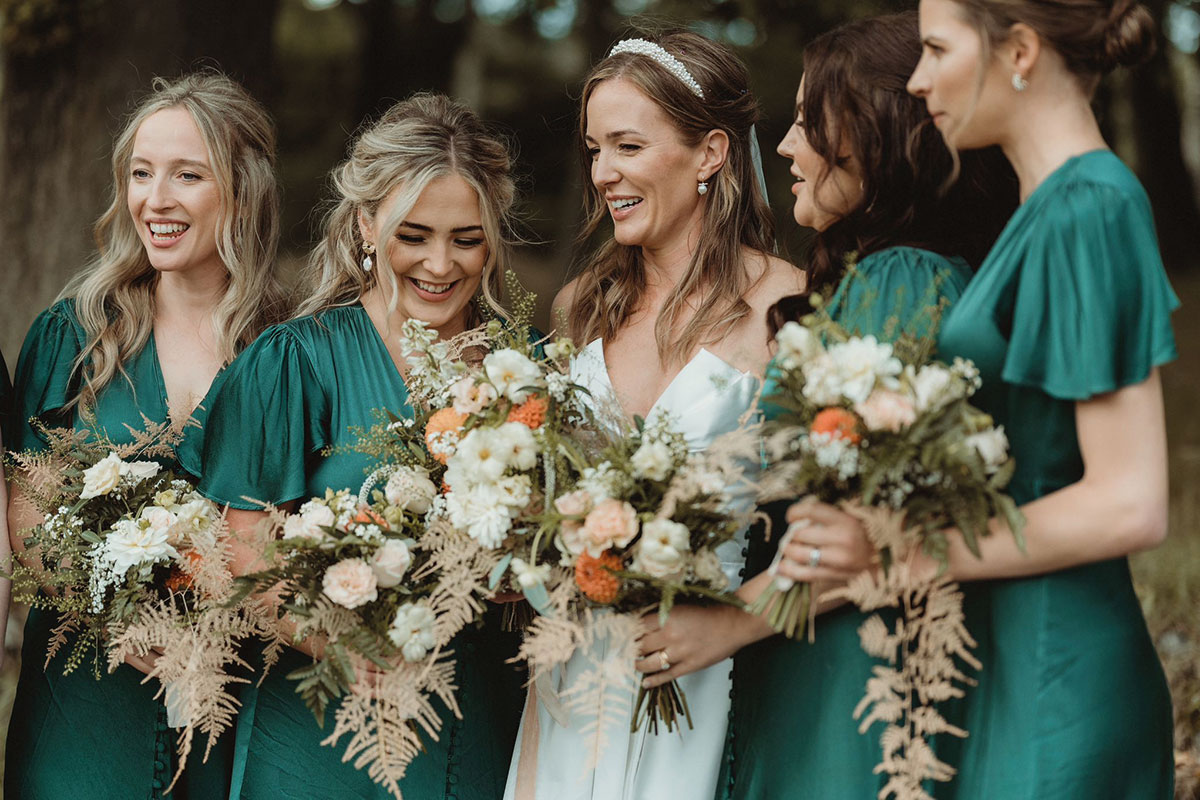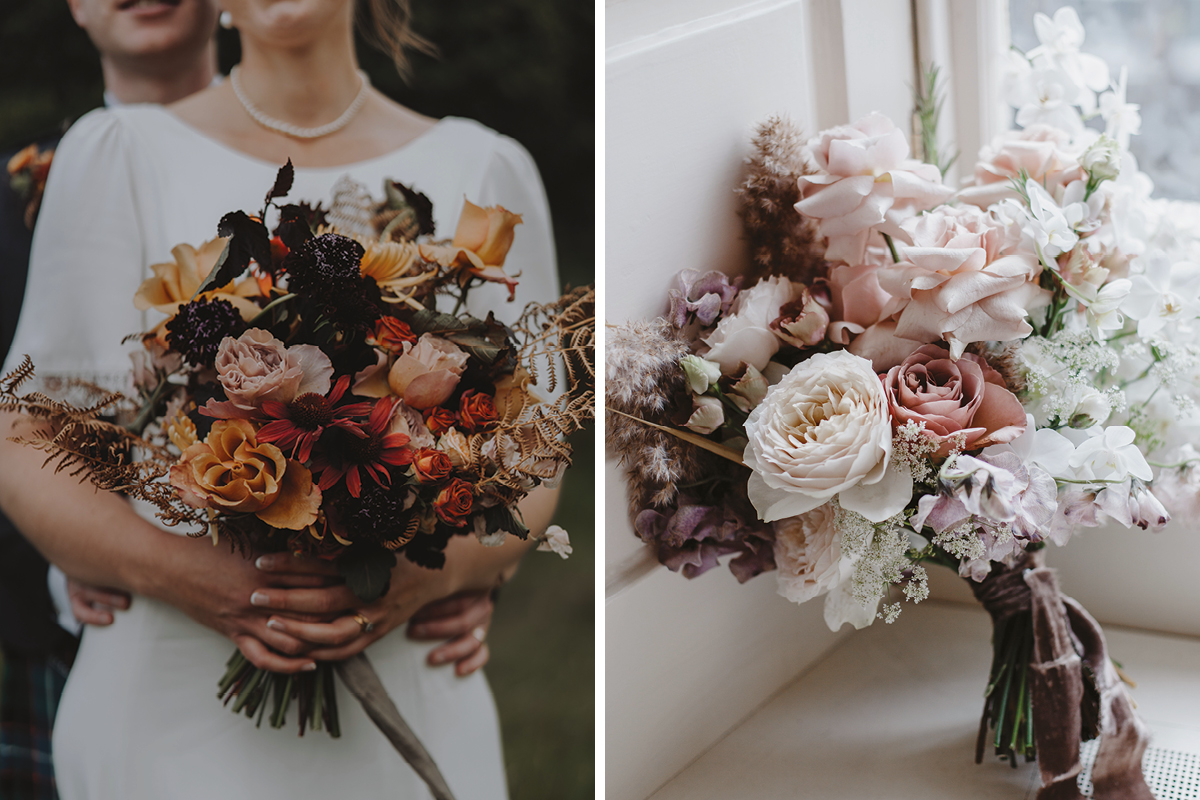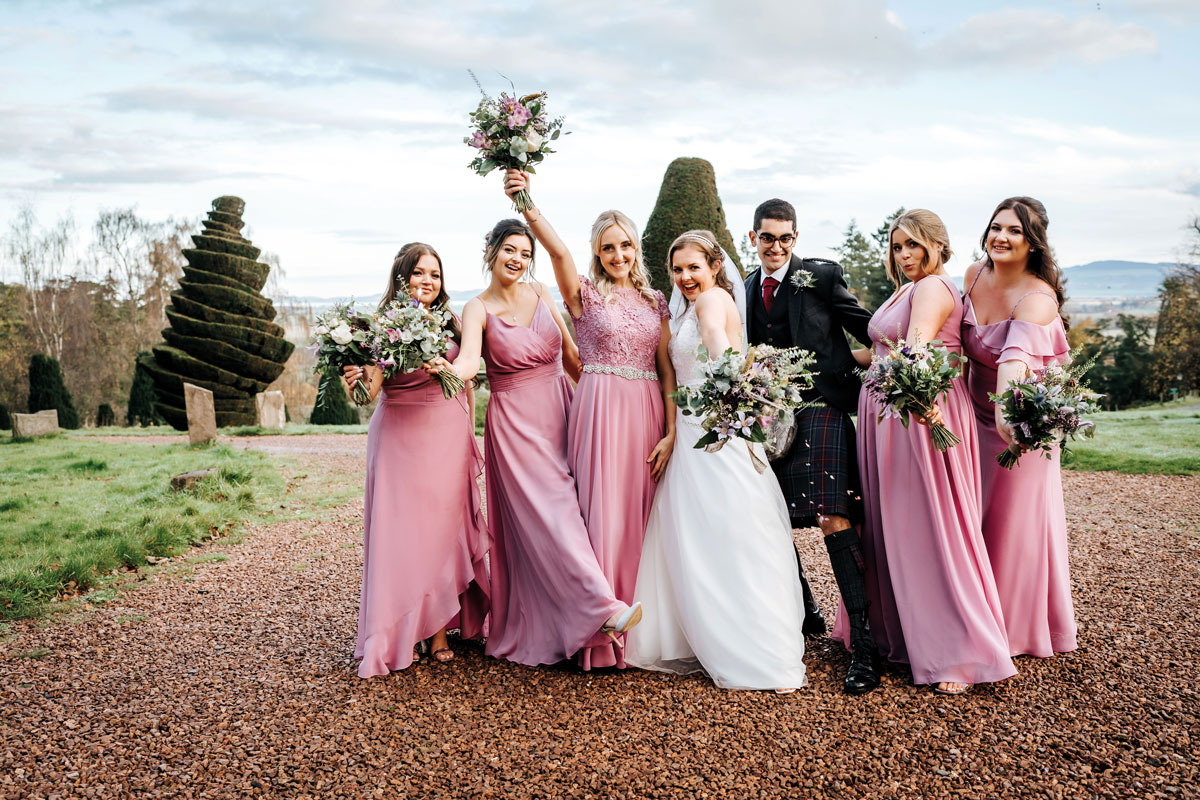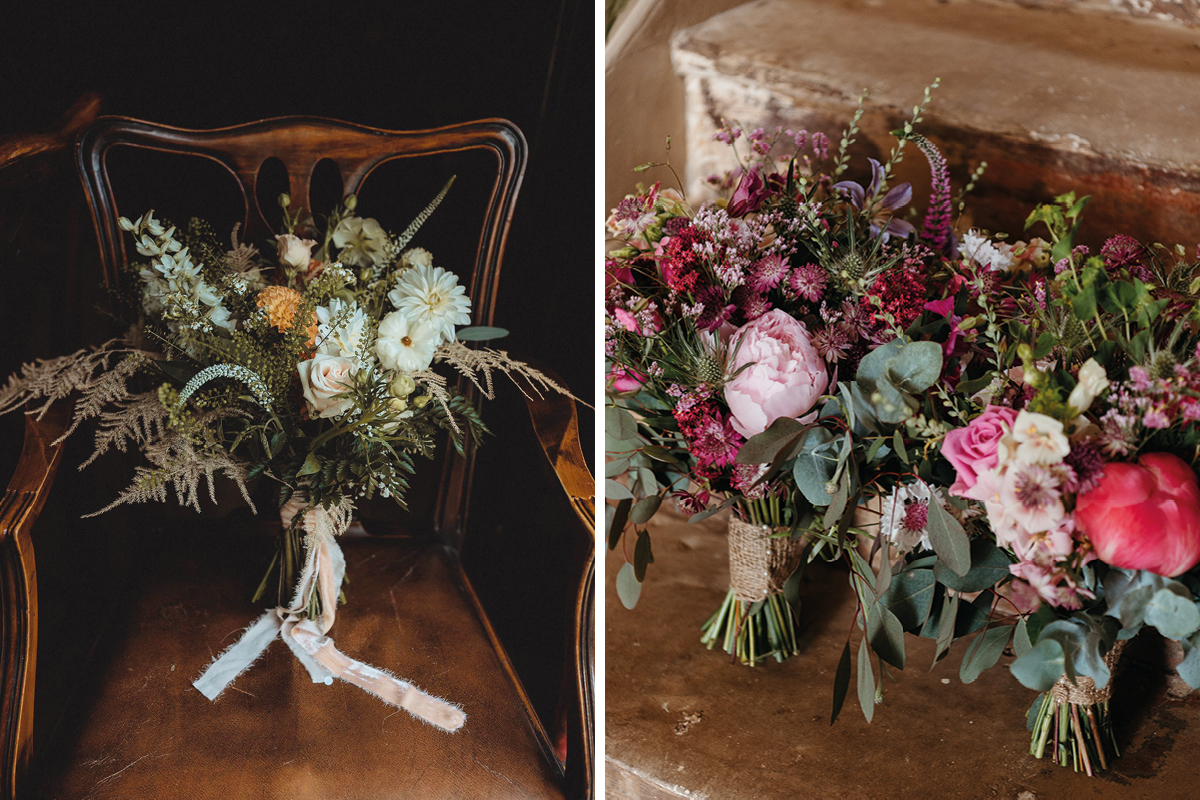You’ll want your bridal bouquet and big-day blooms to look their best as you tie the knot. We chat to the experts to hear how to keep them looking fabulous all day long
Photo: Pixie Rose Edinburgh bouquets captured by Nikki Leadbetter Photography
Your wedding flowers are a small but mighty part of your big day. They’re both an accessory for the bride and a focal point of the celebrations, helping to lock in your overall theme and tie all the colours together.
But flowers are fragile things and can wilt easily – how do you ensure they’ll last for the duration (and survive the bouquet toss, should you decide to take part in that tradition)? Helen Hardman of The Greenshed Flower Studio in Dundee, Rowena Halliday of Pixie Rose Edinburgh and Nathalie Holbrook of Aspen Florals shared their expert tips.
How far in advance are wedding bouquets made?
Your bouquet’s life typically begins about two or three days before the wedding. “I start making two days before – prioritising items that can sit in water such as bouquets or aisle arrangements,” Helen tells us. “For the first 24 hours, they’re in water – all I do is cut the ends off the stems and give them a good drink so they look their best.”
She leaves anything that will be out of the water (such as installations, buttonholes and corsages) until last, and she never uses wires, floral foam or plastic wrappers when making these, so that everything is biodegradable and reusable.
For a Saturday wedding, flowers arrive at Pixie Rose Edinburgh on a Thursday to allow them time to condition. “If buds are still closed, we encourage them to open so they’re in their prime for the wedding,” says owner Rowena. “For example, we’ll put the peonies in the bright shop window to encourage them to pop.”
She does most of the arranging the day before the wedding, and on the morning itself she and her team are up early to trim stems, bind them, and add ribbons and finishing touches to arrangements. “We try to get to the venue three to four hours before the ceremony to set up the flowers. We then deliver the bridal party’s bouquets,” she says. “We aim to make sure that the photographer has already arrived before we get there, so they can capture the moment.”
Once your bouquet has been delivered, keep it in a cool place out of direct sunlight, says Helen. “Place it in water for as long as possible” – say until about 20 to 30 minutes before the ceremony. Don’t forget to dry the stems with a towel so they don’t drip onto your dress.
Photo: Aspen Florals captured by Jacek Hübner Photography
How to choose your wedding flowers
Certain blooms are hardier than others and stand more chance of lasting the pace of the day. Anything with a softer stem or which needs a lot of water will tire quickly, notes Helen. Blooms such as big-head roses, snapdragons and stocks tend to hold up well, as do delicate flowers like waxflower or limonium, which add amazing detail to your bouquet. Rowena at Pixie Rose likes using lisianthus, carnations and delphiniums for their sturdiness.
Particular floristry techniques may also cause flowers to tire more quickly, such as reflexing petals (where you gently peel them open to create a voluminous shape). Rowena notes that the more you touch the petals the more likely they are to bruise and turn brown. Helen agrees: “With a rose, you’re essentially forcing it to open faster than it normally would. However, as the centre of the rose is left alone, it should still last the day.”
As we all know, shopping seasonally and locally is good for the planet. Does this apply to choosing flowers for your bouquet too? What you pick depends on your style and ethos, believes Helen: “Seasonal flowers are better for the environment generally as they need less energy input to make them bloom at their natural time of year,” she explains.
Photo: The Greenshed Flower Studio captured by Dougi Mcmillan Photography
The Greenshed works with the seasons as much as possible, but will occasionally import flowers that are hard to find locally or when there are out-of-season weddings. “With that in mind, it does feel strange, as a florist, to be working with the likes of dahlias in the spring, for example – they are so synonymous with late summer and autumn.”
At Pixie Rose Edinburgh, Rowena also prefers to go for local, seasonal blooms. She’ll try to accommodate your wishes but adds that it can be very difficult to get certain flowers out of season, so florists have to manage people’s expectations.
Helen echoes this, pointing out that peonies, heather, tulips, poppies and irises simply aren’t available out of season: “But that just makes them all the more joyful when they are around! You could add dried flowers if the varieties you love aren’t available.”
What should I do to care for my flowers on the day?
As a general rule, flowers can survive out of water for up to two hours, says Rowena, so your bouquet should last through the ceremony and still look dreamy.
Pop them in water between the ceremony and pics for a quick refresher, suggests Helen, “But don’t stress too much if this isn’t possible; they should still look great – unless it’s a boiling day!
"A good rule of thumb is that if you feel like you need a glass of something to cool you down, your flowers do too!”
Photos L-R: Pixie Rose Edinburgh captured by Nikki Leadbetter; The Greenshed Flower Studio captured by Donna Murray Photography
Place bouquets in water once you sit down for dinner: any flowers that are beginning to droop will soon perk up. Some brides will reuse their blooms as centrepieces. If you’re doing this, have vases of water on the tables for the bridesmaids to pop them in – et voilà!
Read more about how to reuse your wedding décor and blooms here.
How can I preserve my wedding flowers?
Not ready to part with your bouquet after the wedding day (or toss it to the crowd)? Your flowers can be dried or pressed to preserve them. “We can dry stems if requested,” says Rowena.
“Roses and delphiniums dry really well, but not every stem suits this treatment. Pressed, dried flowers can be a really sweet memento from your day, though.”
Each floral arrangement will be a unique creation
“We approach each wedding with an overall concept, working with individual elements and key moments throughout the day, to tell a complete story," says Nathalie Holbrook of Aspen Florals.
"We consider every detail, working closely with other suppliers or sourcing materials, props and rentals (where needed), to capture the aesthetic and deliver coherent and considered floral design.”








